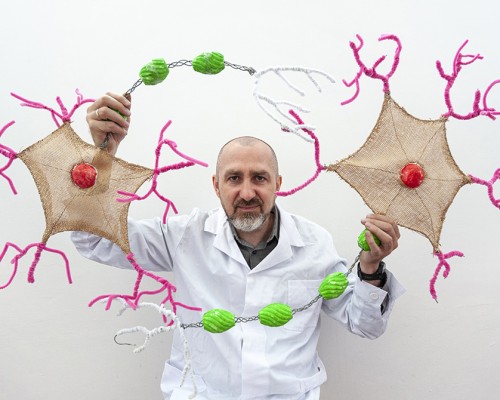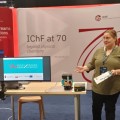To forget or to do not forget?
Reading time: about 4 minuts

Alzheimer's disease (AD) is a form of progressive dementia interfering with daily living. It is caused by the decline in the number of brain cells resulting in the deterioration of our mental abilities. One of the main reasons for the worsening brain cells condition and even the brain shrinkage are molecules having a specific structure called β-amyloids (Ab). They are peptides that tend to agglomerate around the nerve cells, becoming toxic and damage them. Recent studies, presented by scientists from the Institute of Physical Chemistry, Polish Academy of Sciences, led by dr. Piotr Pieta, give hope for inhibition of the β-amyloids' toxicity by applying the K162 molecule. Researchers present a tremendous protective impact on the biological membranes and explain its inhibition mechanism.
M like memory
Memory is an essential part of our transformation from newborns to adults. It is one of the crucial processes taking place in our brain determining who we are. Our memories are stored thanks to nerve cells - neurons processing and transmitting information by electrical and chemical signals. Within the formation of new projections and interconnections between them, some memories can stay with us for the whole life. If these neurons are inflamed, they can be degenerated, leading to brain volume loss, causing an even progressive form of dementia. As result, it negatively affects our memory as well as our thinking and behavior.
Unfortunately, many people struggle with the cruel and silent memory killer affecting the brain irreversibly, which is AD. It disrupts the communication among neurons, leading to their inflammation, loss of cells’ functions, and following cells’ death. It leads to memory loss and causes severe problems like confusion and affecting the general intellectual ability. Therefore, affected people lose all they have. It can affect even young people, developing AD silently in the brain for several years until giving fatal symptoms.
A like amyloids, B like the beta version
What is the cause of Alzheimer's disease, which promotes neuron inflammation and exacerbates their damage? One of the causes is misfolding and abnormal production of Aβ, which builds up in the brain and affects neurons. When Aβ occurs as monomers of a structure rich in α-helices and random coils, they are readily soluble in water exhibiting neuroprotective abilities and stimulates brain development. However, misfolding and overproduction lead to the production of a water insoluble Aβ of a structure rich in β-sheet, which easily aggregate to form toxic oligomers and damages biological membranes. Therefore, many studies are focused on inhibiting Aβ aggregation and decreasing the lifetime of toxic Aβ oligomers.
Dr. Piotr Pieta’s team solved the mechanism of inhibiting the toxicity of small Aβ oligomers by the molecule with an intriguing abbreviation: K162. Researchers focused on molecular-level direct imaging, electrochemical, and molecular dynamics studies to show in detail the Aβ-K162 interactions in the absence and presence of a brain-like model membrane.
“K162 modifies Aβ aggregation by inhibiting toxic Aβ oligomers production and promoting non-toxic Aβ monomers, dimers, and fibrils formation. Unlike other inhibitors, K162 protects neurologically beneficial Aβ monomers. This unique mechanism of action of K162 may provide an alternative therapeutic fight strategy against AD”. – remarks Dr. Piotr Pieta.
One of the most important properties of the K162 molecule is that it can easily cross the biological membranes and penetrate the blood-brain barrier. Furthermore, once it binds to nerve cells, it protects them against inflammation and neuronal damage. Currently, there are many difficulties in successful therapies protecting neurons from toxic clusters of amyloids, while thanks to the understanding of its inhibition mechanism we are a step closer to develop novel therapeutics. Experimental results were described in the ACS Chemical Neuroscience on 22nd January 2021.
This publication is part of a project that has received funding from the European Union's Horizon 2020 research and innovation programme under the Marie Skłodowska-Curie grant agreement No. 711859. Scientific work funded from the financial resources for science in the years 2017-2021 awarded by the Polish Ministry of Science and Higher Education for the implementation of an international co-financed project.
SCIENTIFIC PAPERS:
“Inhibition of Amyloid β Induced Lipid Membrane Permeation and Amyloid β Aggregation by K162”
Dusan Mrdenovic Piotr Zarzycki, Marta Majewska, Izabela S. Pieta, Robert Nowakowski, Wlodzimierz Kutner, Jacek Lipkowski, and Piotr Pieta
ACS Chemical Neuroscience 12, 531-541 (2021)
DOI: 10.1021/acschemneuro.0c00754
- Author: Dr Magdalena Osial
- Contact: mosial@chem.uw.edu.pl
- Photo source: Grzegorz Krzyzewski
- Date: 19.04.2021







